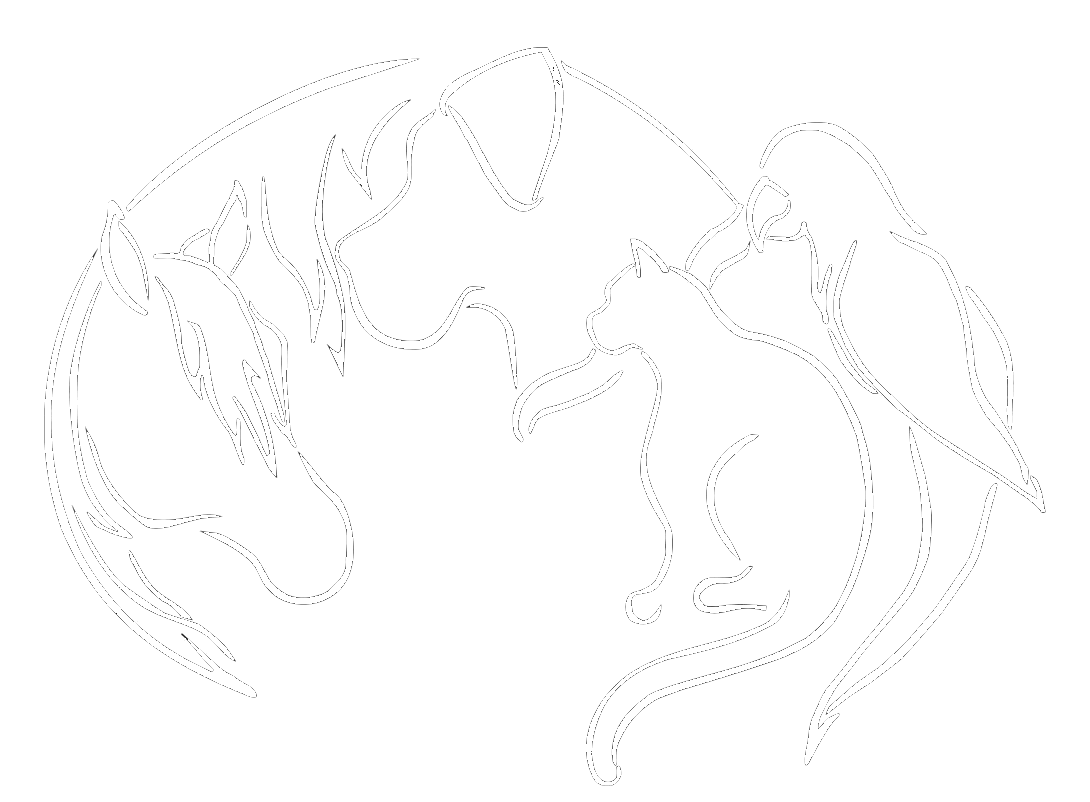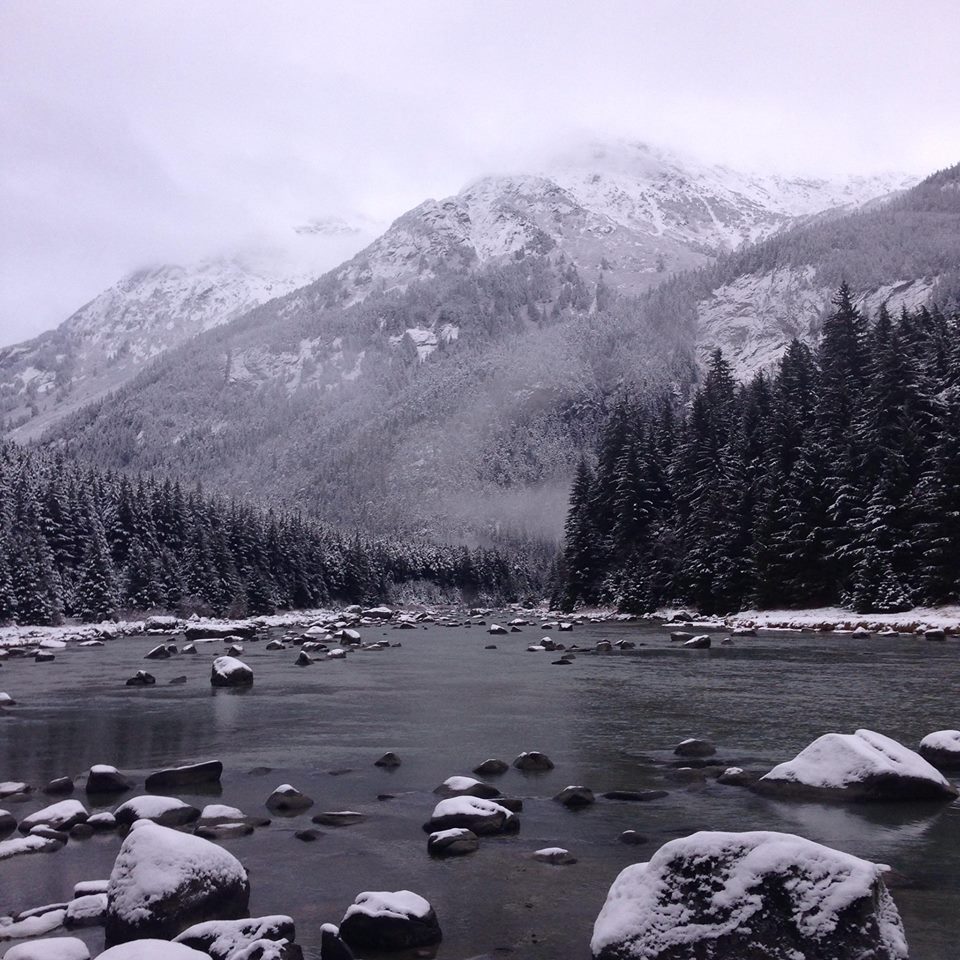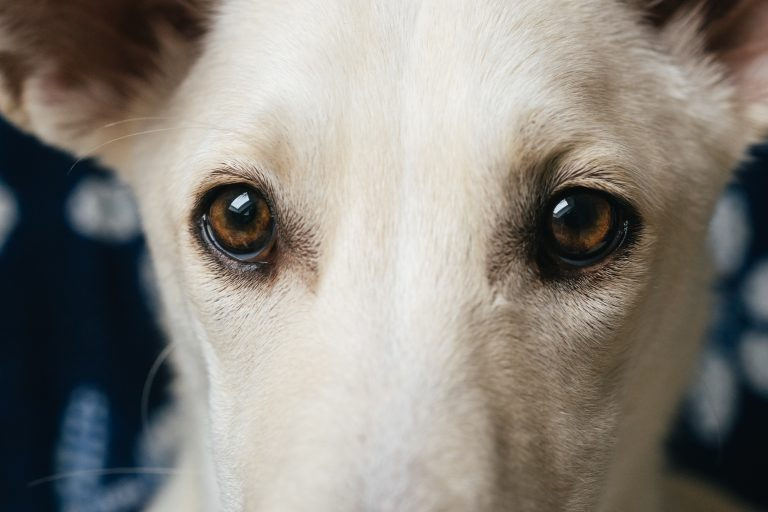Acute diarrhea is a common ailment of healthy dogs. Learn about what you can do at home to help treat uncomplicated diarrhea.
Glaucoma in a Young Dog
Sled Dog Medicine Part II
Pralognan la Vanoise, one of the beautiful villages we were working in.
This year I had the opportunity to join the vet team for La Grande Odyssée, a long-distance staged dogsled race that travels through the French Alps. I was very excited to work on a staged race for the first time, which is very different from the Quest, and I was also lured by the promise of French food and little French villages tucked into the Alps.
Dog team hanging out above the clouds of Grand Massif.
I arrived in France at the beginning of January. There are four different races that take place during La Grande Odyssée - a long distance race, a mid distance race, and two shorter races that only last 3 days each. Every day the mushers, race officials, logistics team and vet team travel to a different village to set up the stage, which involves making a start and finish chute, musher parking, and a small mobile veterinary hospital. The mushers drive smaller teams - 10 dogs for the long distance racers, 8 dogs for the mid-distance racers, as opposed to the 14 dogs that Quest mushers drive - and because they're not camping overnight, their sleds are astonishingly light. It typically take teams between 3-6 hours to complete a stage, and once the teams complete a stage, the dogs hang out at their dog truck rather than camping in straw on the gangline.
Dr. Sandrine Pezard working on a race dog.
One of the big differences between La Grande Odyssée (LGO) and other races I have worked on was the array of diagnostic equipment we had available. Because we reached every checkpoint by road, we were able to set up a small mobile hospital at each checkpoint with an x-ray, ultrasound and blood chemistry analyzers. While the bread and butter of sled dogs vets are lameness and diarrhea, which usually don't require diagnostic equipment to diagnose or manage, these tools were very useful for the more unusual cases that presented. One of the most dangerous conditions that can occur in sled dogs is myopathy, a condition where diffuse, widespread breakdown of muscle tissue releases proteins that can cause kidney failure and sudden death. The clinical signs of this disease are distressingly subtle - a dog may begin to pull less hard, or adopt an unusual gait, or may collapse in the harness but spring back up again within a few minutes and scream to start moving again. Often there will be a characteristic coffee-brown urine that helps point you towards the correct diagnosis, but we're not always lucky enough to catch that sign. On LGO this year we had a dog who came in weak and reluctant to get up from laying down, but the musher had not noticed any brown urine. When we ran his bloodwork we found a severe elevation in his creatinine kinase, an enzyme that acts as a biomarker for muscle damage. This told us that the dog had myopathy and could potentially go into a life-threatening crisis if not treated, so we started him on high rates of iv fluids to help protect his kidneys and flush out the damaging proteins, and the dog recovered uneventfully.
Dog team running through the pouring rain in Pralognan la Vanoise.
The weather added a challenge to the LGO that I hadn't anticipated. While the weather conditions overall were much warmer than what Quest veterinarians experience (I think our all-time low was -15 C on top of Mont Cenis), we didn't have the infrastructure available on northern dogsled races. Having heated checkpoints on the Yukon Quest and other northern races is critical when temperatures can drop to -40 C or below, but in the more hospitable weather of the LGO our checkpoints were unheated, 3-walled tents that we would erect and take down each day. This made it very challenging to keep iv fluids and iv medications from freezing. I had a small pharmacy of various injectable medications tucked into the internal pockets of my parka, and we would try to keep iv fluids thawed on the dashboards of our vans. Administering iv fluids to dogs was hugely challenging, as the fluids would try to freeze in the administration line, and we would have to take advantage of supplies we had and the generosity of people around us with various forms of heat to keep the fluids running.
Lac Cenis, with the dogsled trail on the far left.
The vets on the LGO were incredibly smart and generous with their knowledge, the mushers were good humoured and devoted to their dogs, the dogs were strong and brave and silly and adorable, and the Alps were breathtaking. But I missed the rhythm of the races up here - the punishing frenzy of the first 48 hours of the Quest contrasting with the quiet moments between teams arriving when you can walk through the dogyard and spy on a dog you were worried about to make sure they're wagging their tail and eating well. I am incredibly grateful to head veterinarian Dr. Yannick Klein as well as the entire La Grande Odyssée race organization for allowing me to come and learn from them. I'm heading up to Dawson to work on the Percy again in March, and can't wait to be out in the dogyard again.
When you've been ready to go for hours but your musher is still eating breakfast.
Sled Dog Medicine Part I
This is a blog post that got a little out of control, so I split it into two parts - part I is about working as a sled dog vet in the Yukon, and part II is about working on La Grande Odyssée, a long-distance staged race in the French Alps.
In addition to working as an associate veterinarian at Alpine Veterinary Medical Centre, I have also volunteered for a variety of dogsled races since moving to the Yukon. The first race I worked on was the Percy DeWolfe, which runs from Dawson to Eagle, AK and back. I went on the Percy as a new graduate vet who had only been living in the Yukon for a few months. I wasn't very confident in my veterinary knowledge and skills at that point, but the race organizers hooked me by telling me that I would get to ride a snowmachine. "How do you keep from driving it into the open water?" I asked Rick Brown nervously the afternoon before I drove up to Dawson. "You just don't drive it into the water," Rick told me, which is pretty good advice for driving just about any vehicle.
My parka was insufficient, and my Sorel boots that I had purchased at the last minute were too big, and I am the sort of person who becomes proficient at things through stubbornness and fear of embarrassment if I quit, rather than a natural aptitude for acquiring new skills, so riding a snowmachine the 150 km up to Eagle was harrowing. But in working in the dogyard at 2 AM with sleepy dogs snugly nestled into their straw and sitting around a bonfire listening to mushers and the residents of Eagle, I felt like I learned more about dogs and about people in that weekend than I had a long time.
I work on the Percy as often as I'm able to, and have worked on other mid-distance races around the Yukon like the River Runner and Silver Sled. I've also worked on the Yukon Quest a couple times. I've learned a lot of valuable skills working on dogsled races. I love having access to the diagnostic equipment at our practice like x-rays, ultrasound and blood analyzers - these tools were invented because there's a lot of information about people and dogs that you can't get just from a physical exam alone. But working on a dogsled race where all you have is your hands, your brain, and two plastic bins filled with iv fluids and a few medical supplies, I've learned to pay close attention to the subtleties of a physical exam - what does it mean when a dog's temperature is elevated at 30 minutes as opposed to 2 hours after arriving at a checkpoint? What does it mean if the dog is sitting up and ostensibly looking fine, but its heartrate is 120 beats per minute? What does it mean if I apply pressure to the inside of the biceps and the dog doesn't yelp, but I feel a shiver travel up from its toes into my fingertips?
Dogsled races have also been a tremendous opportunity to spend time with and learn about people whose lives are very different from mine - kids living in remote Alaskan villages that number 100 people or less, young American soldiers that volunteer at the Two Rivers checkpoint in Alaska, a pediatric neurosurgeon from Toronto volunteering at the vet shack in Dawson. I think the one of the most important lessons I've learned from these people while working on dogsled races is "Some of the crap you worry about is stupid and doesn't matter," which, like "Just don't drive into the water," has nothing to do with dogs at all, but is important to remember when life becomes confusing or overwhelming.
Working on dogsled races has taught me a lot about trusting myself - that if my instinct is that something is going wrong, then trusting that instinct and treating the patient accordingly is always the best way to go, even when my self-doubt screams that I'm over-reacting. These races have also taught me a lot about trusting strangers - that if you're in the middle of nowhere and a dog needs help, people that you've just met minutes before will give absolutely everything they're capable of offering, even if it's just a warm room to sit in, a brighter light, or sitting with a dog and telling it stories so it doesn't have to feel lonely when its apart from its musher and team.
Part II coming later this week or next.
- Jess Heath
Frodo and Canine Epileptoid Cramping Syndrome
Frodo has been a longtime patient of mine and has always been a very healthy dog, but this past April he came in to see me with a very unusual complaint. Frodo's owners reported that over a period of several weeks he had experienced multiple episodes of having his legs tremble and unable to bear weight. He was conscious during these episodes, unlike a dog experiencing a seizure, and would recover rapidly without having any of the confusion or altered consciousness that dogs recovering from seizures sometimes experience.
Frodo was a very healthy dog with no abnormalities on his physical exam, and a blood panel also showed no abnormalities. At this point I was pretty stumped - not every dog with epilepsy will present with classic seizures, but Frodo's episodes did not seem even like atypical seizures. I was concerned that Frodo had something more mysterious going on, and I was worried I wasn't going to be able to diagnose or help him.
Frodo's owners did some reading and research and asked me if I had heard of Canine Epileptoid Cramping Syndrome (sometimes referred to as Spike's disease). This is an uncommon condition that causes trembling, cramping and staggering, in episodes lasting from a few seconds to 30 minutes. Affected dogs are conscious during these episodes. This is an inherited disorder in some Border Terriers, but can occur in any dog breed. This disease parallels a condition in humans called paroxysmal nonkinesigenic dyskinesias (PNKD).
In a scientific study on six Border Terriers, after nine months five of the six dogs stopped having cramping episodes after being switched to a gluten-free diet. The one dog who did not improve was found to be consistently eating horse manure - after convincing this dog to stop eating horse manure and to eat a gluten-free diet, he also improved. After the completion of the study, two of the dogs were accidentally fed dog treats with gluten again and had relapses of their cramping episodes, which stopped once the gluten was again removed from their diet.
Frodo's owners switched him to a gluten-free diet, and he has not had any episodes since making his diet change. I feel so lucky and grateful that Frodo's owners found both a diagnosis and a treatment when my own research had not turned up anything. I think sometimes our clients feel shy to approach us with ideas they've found through Google - and to be fair, there is a lot of information about animal health on the internet that is inaccurate - for example, the relative wetness or dryness of a dog's nose does not indicate anything about its health. However, we are always happy to discuss any ideas you have or that you may have read about.
You can read more about Canine Epileptoid Cramping Syndrome here.
And one last thing before I go - I do talk to a lot of people who express concern about the presence of corn or gluten in their pet food. While Frodo has a very unusual disease that makes him sensitive to gluten, the vast majority of dogs will not suffer any ill effects from eating corn or gluten, and both corn and gluten are good sources of energy. While I am grateful for the existence of gluten-free diets for the rare dog like Frodo that has a gluten-responsive medical condition, most of the time if I see grain-free or corn-free diets in pet stores I recognize that a very savvy marketer has found a way to distinguish their diet as "premium" and set the price tag as such. There is no scientific literature supporting either grain or corn as harmful to dogs.

















